Acquire a CD copy of you CT scan from your radiology provider.
Launch InVesalius and choose the CT scan CD root directory.
Choose the part of the scan you want to use, then hit "Import"
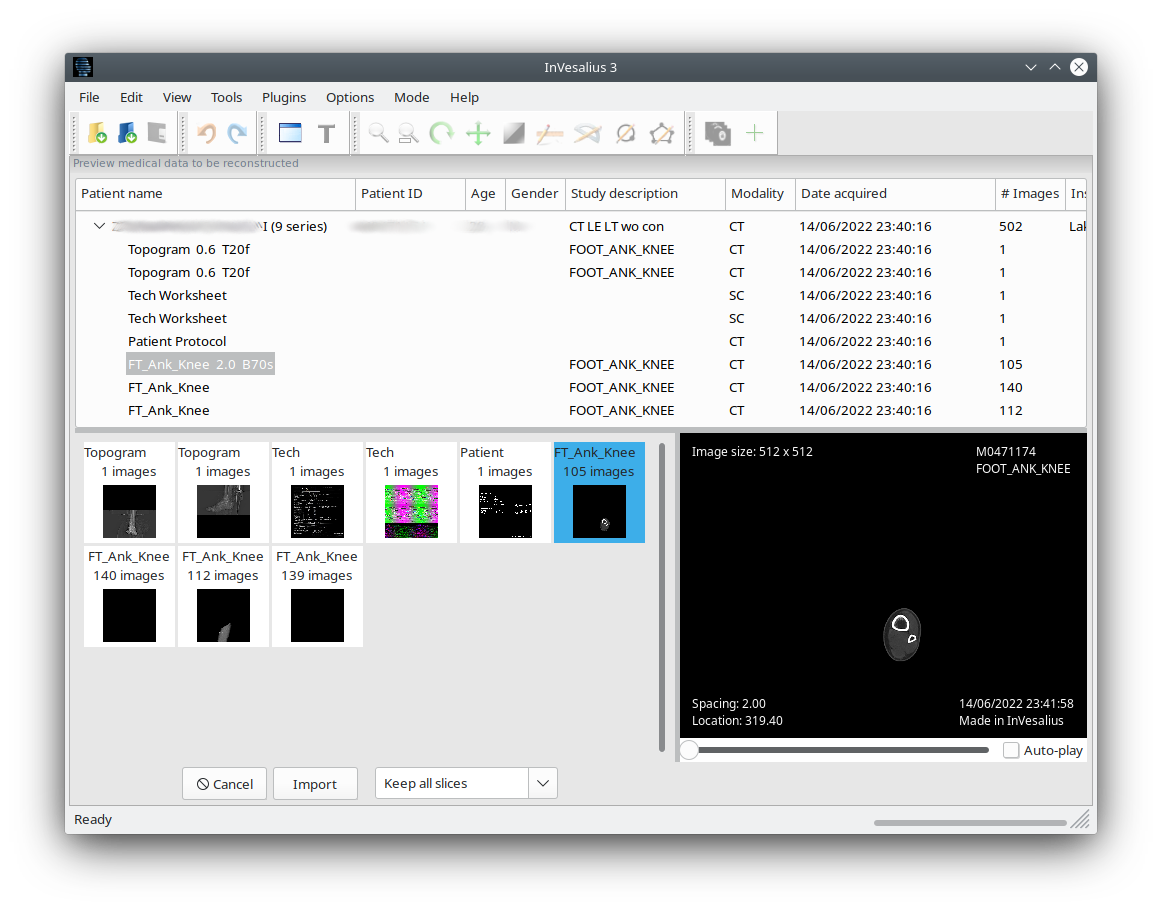
Select the "Skin Tissue" mask then "Create Surface" to create the 3d model.
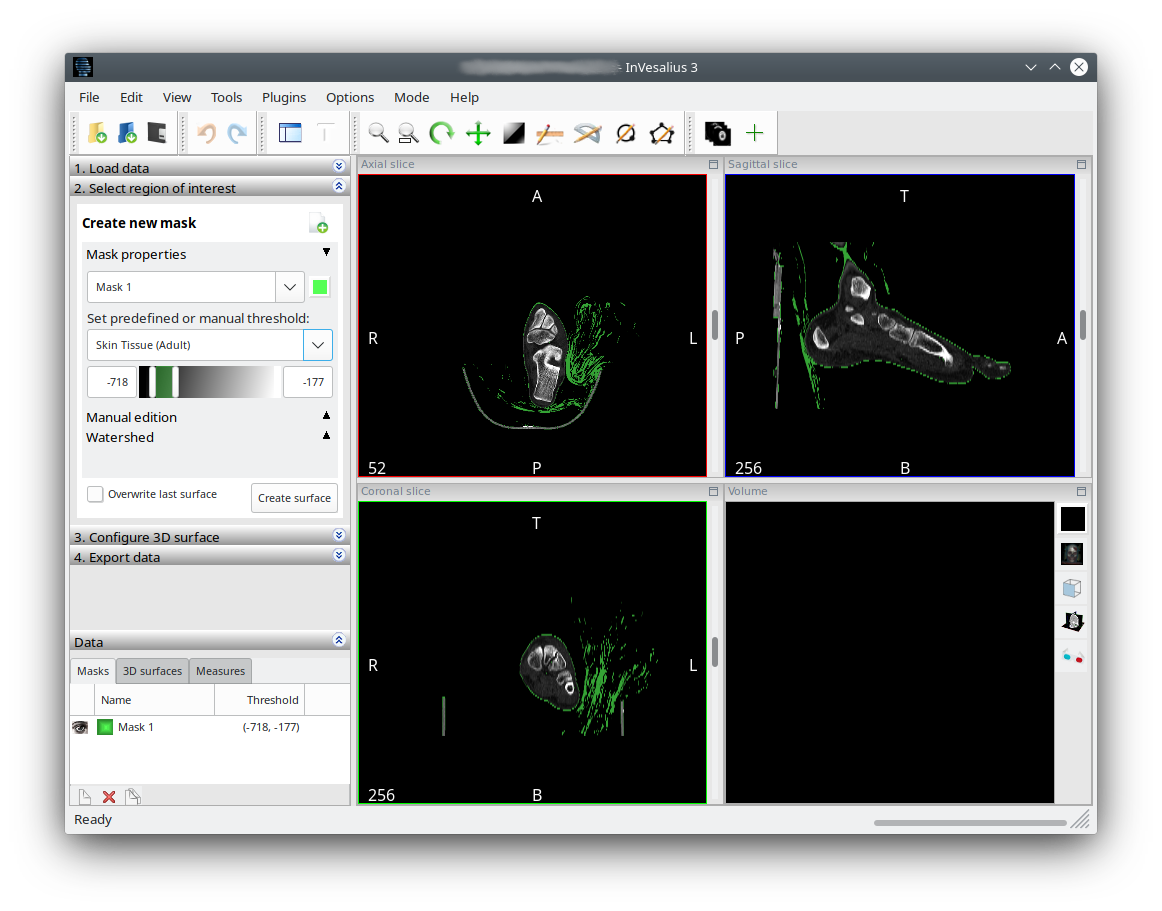
Continue to export the 3D model file as an STL.
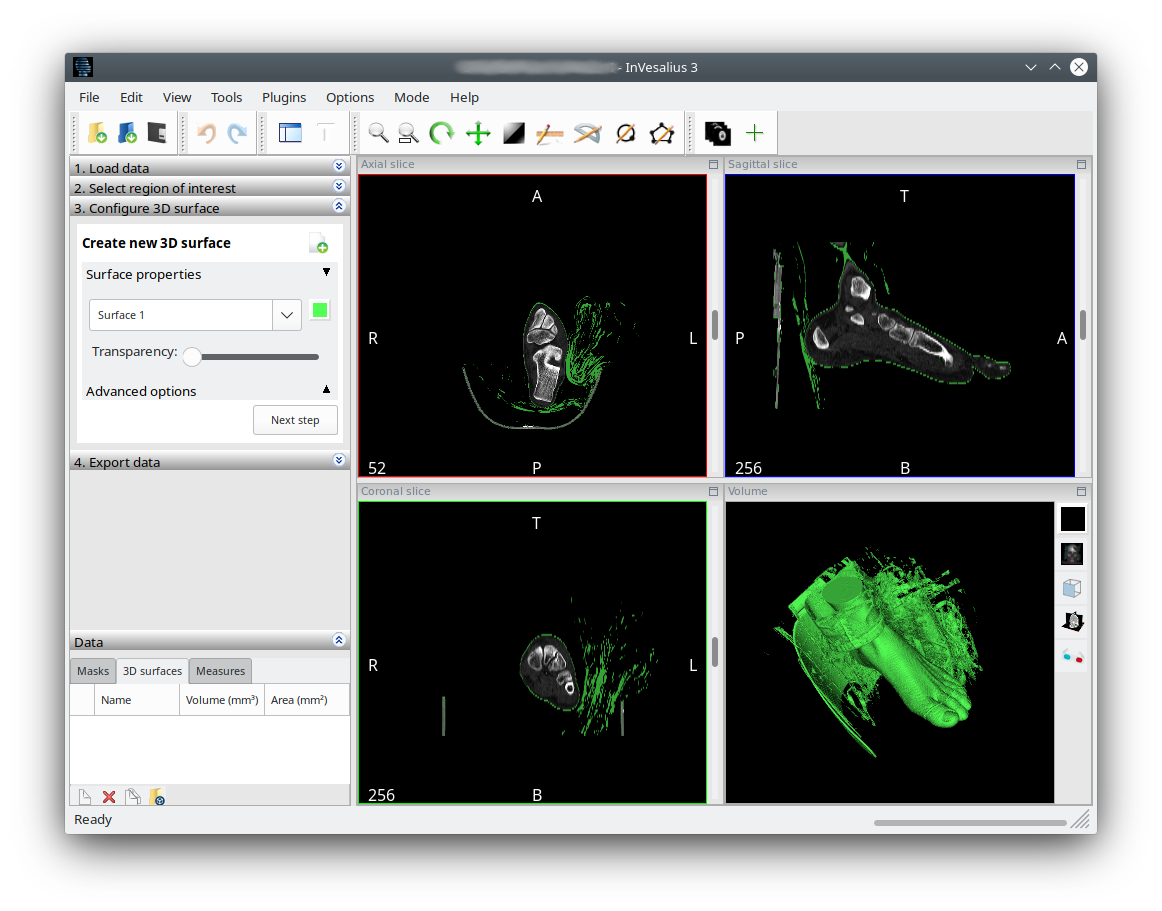
After exporting from InVesalius open the saved model with MeshLab for further processing.
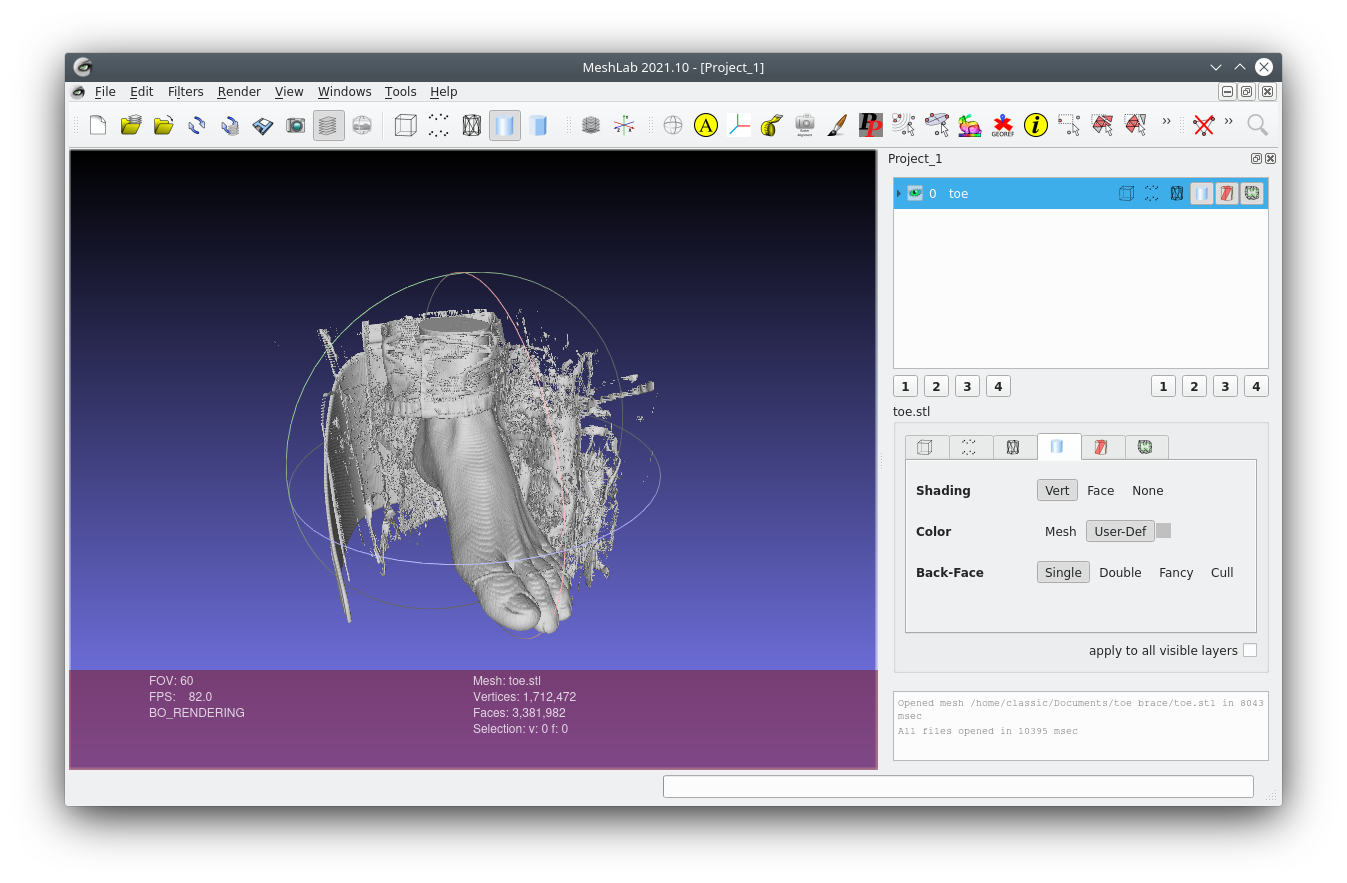
Using the "Select face" tool delete all unwanted parts and noise on the model. For some reason you need to export the mesh and re-open to continue.
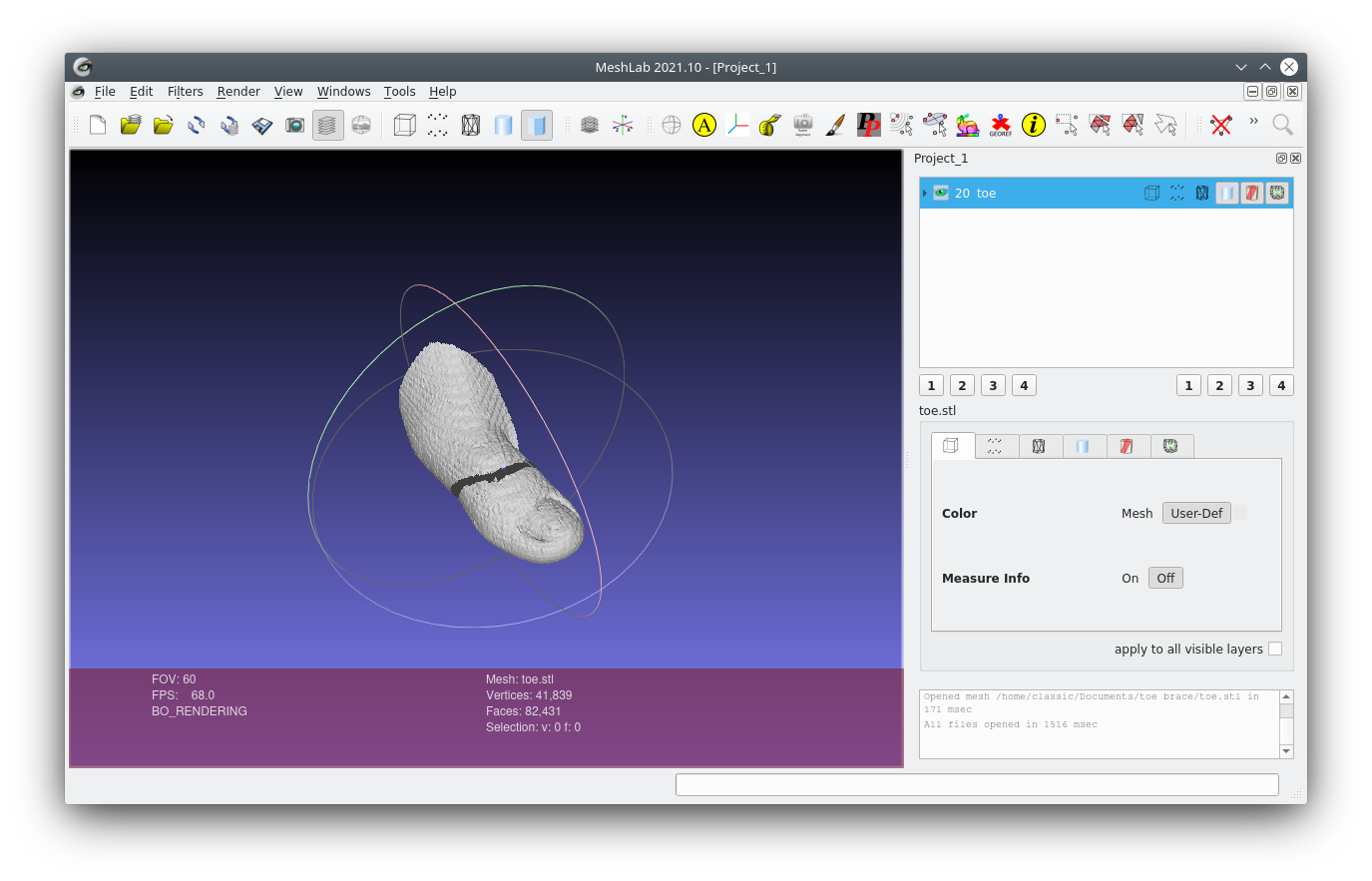
Run the "Laplacian Smooth" filter with the "Smoothing steps" set to 5.
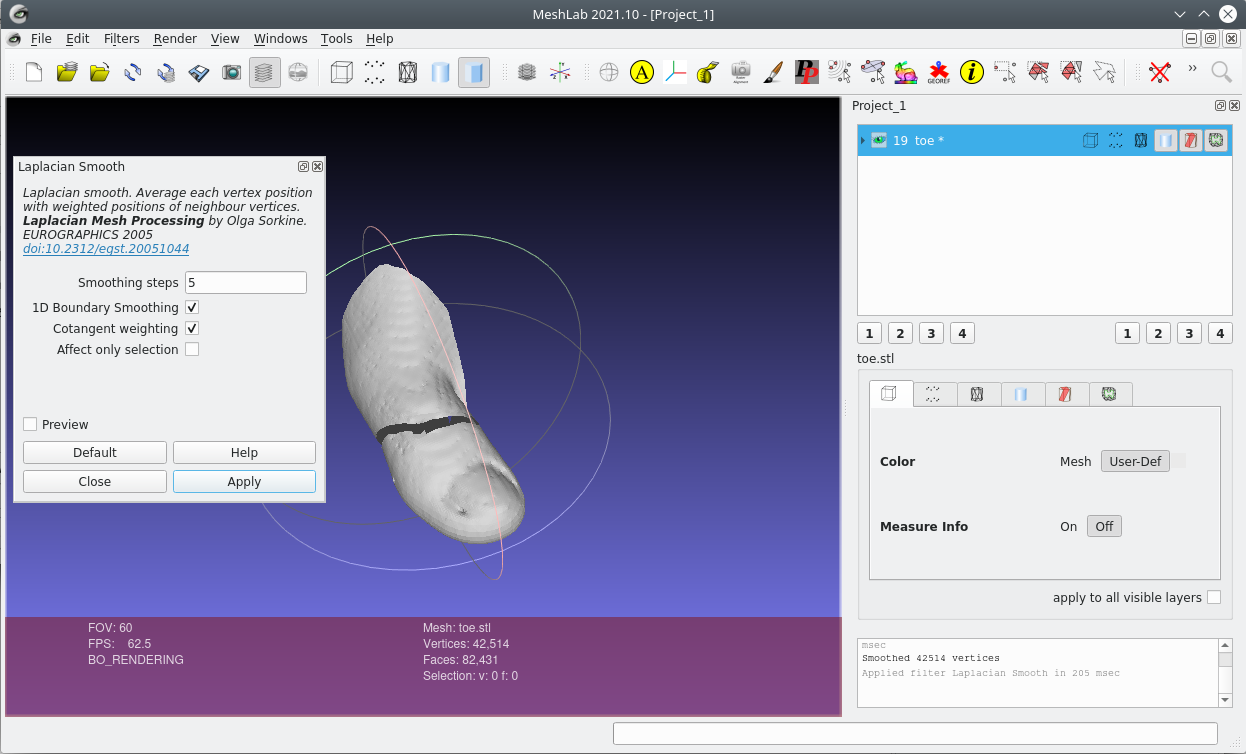
The "Surface Reconstruction: Screened Poisson" filter with the "Reconstruction Depth" set to 5, creates a new mesh with all gaps and holes closed. Hide the original mesh and select the newly generated one.
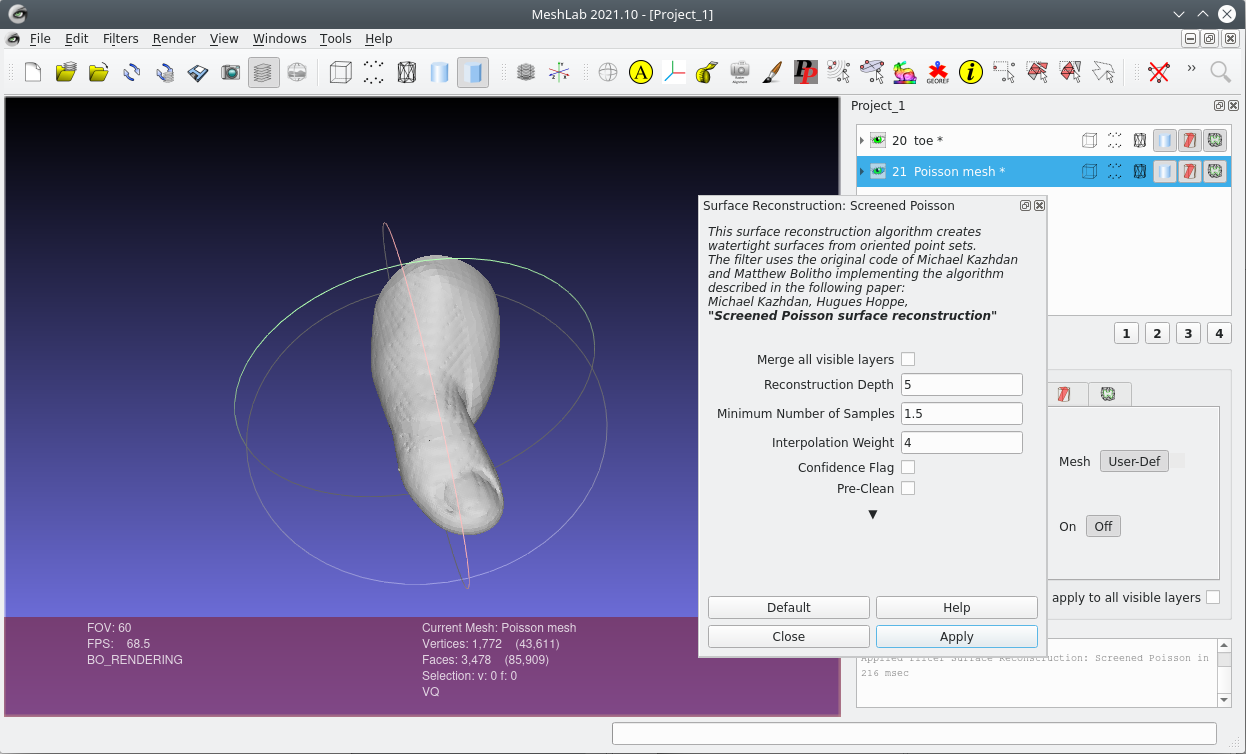
Next run the "Uniform Mesh Resampling" filter with the "Precision" set to 0.5. Again this creates a new mesh, hide the old, select the new.
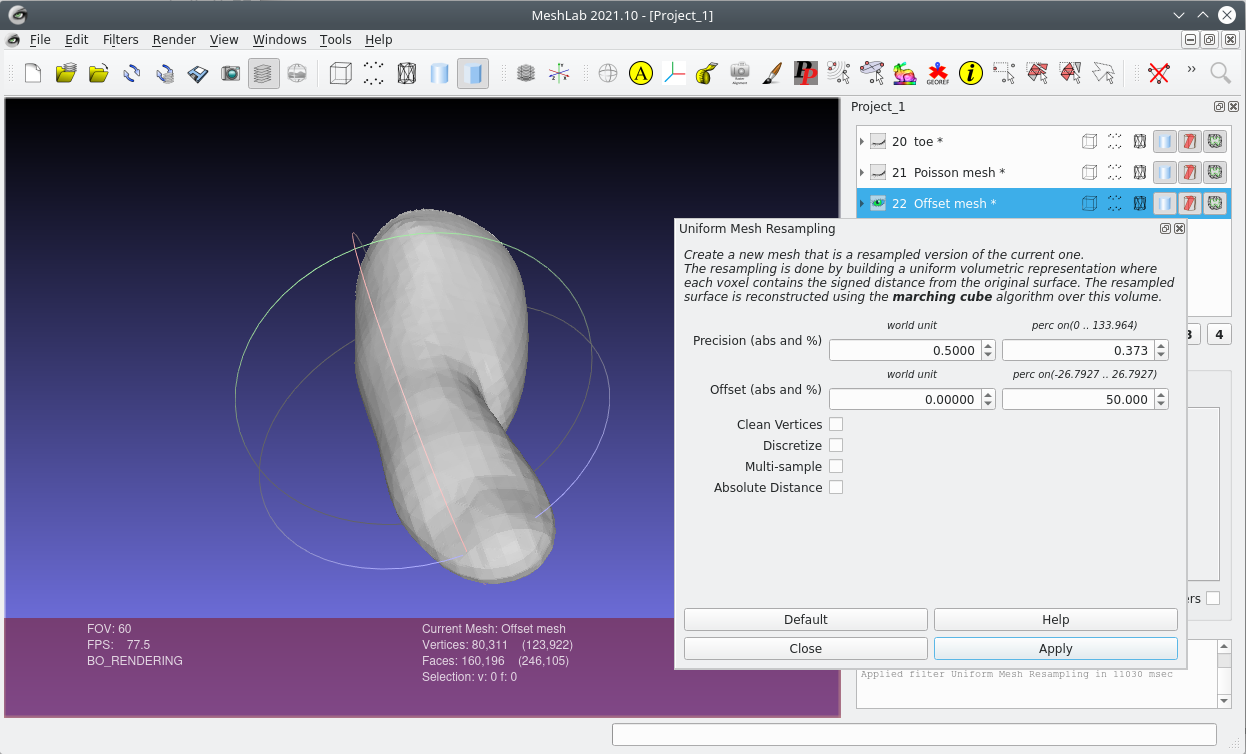
Again, run the "Laplacian Smooth" filter but with the "Smoothing steps" set to 10.
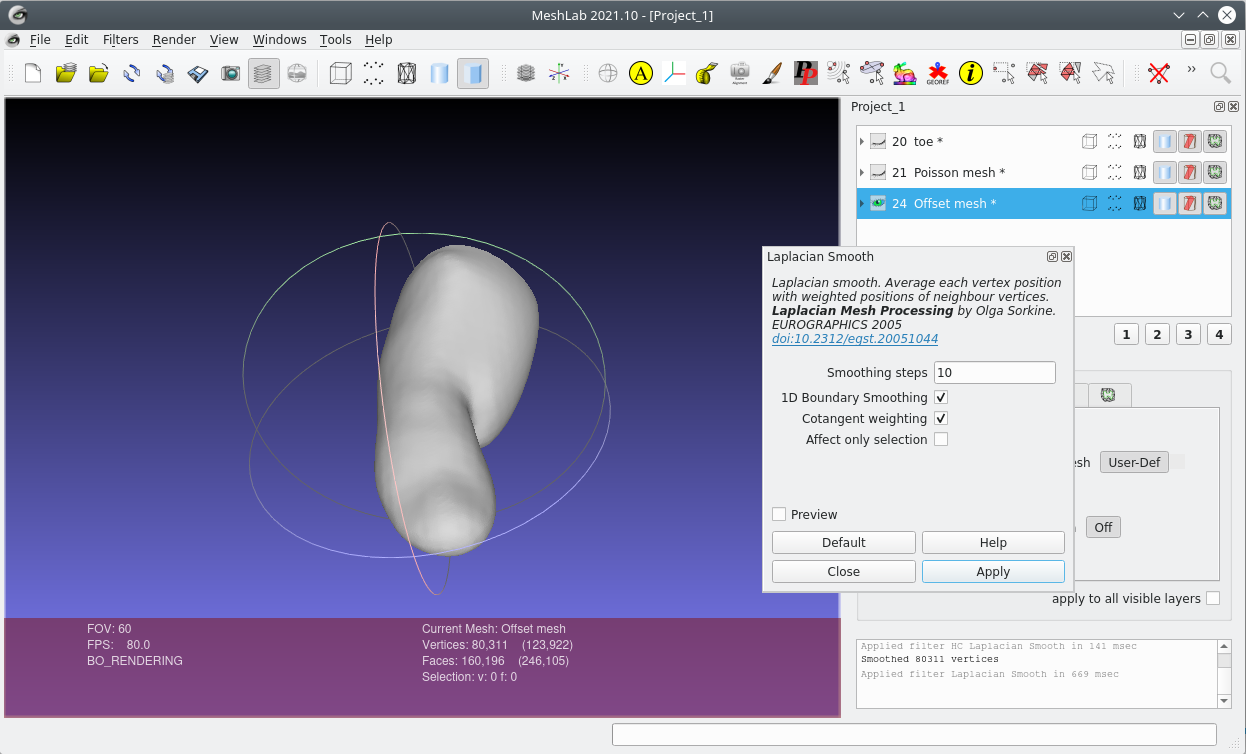
Use the "Select face" tool to trim the model to the desired shape.
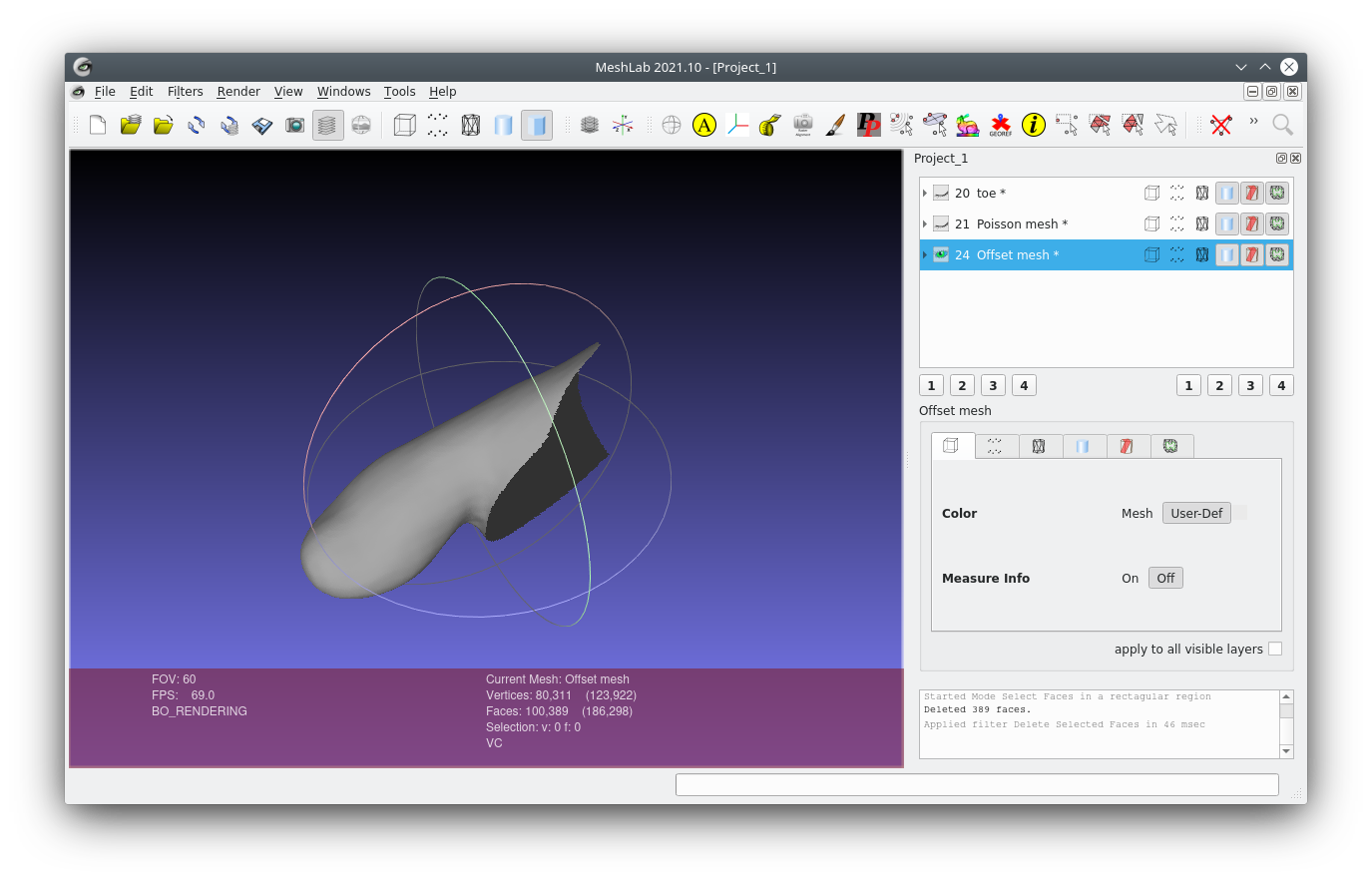
Again an export of the last mesh and a re-open is needed. Then use the paintbrush "Smooth" tool to take care of the rough edges.
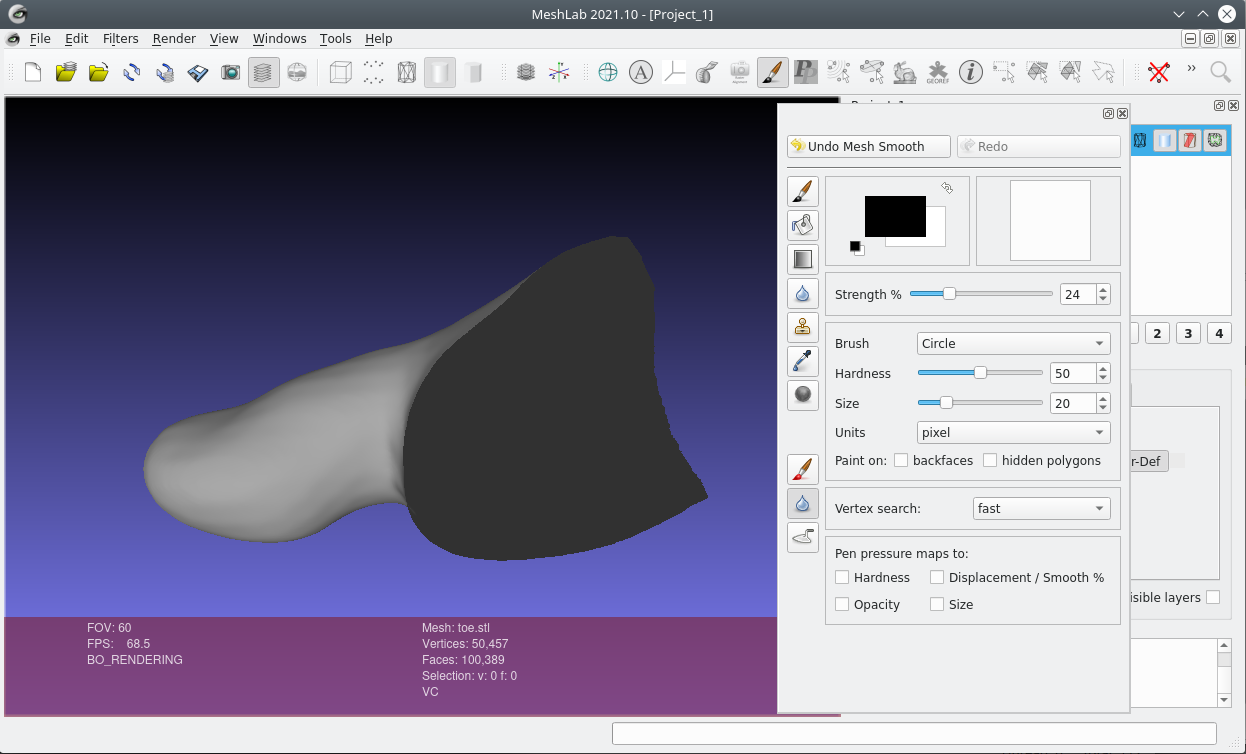
Finally, use the "Uniform Mesh Resampling" filter with the "Precision" set to 0.5, the "Offset" set to 0.65 and the "Absolute Distance" checked to create a thicker surface. Then save the last created mesh as an STL.
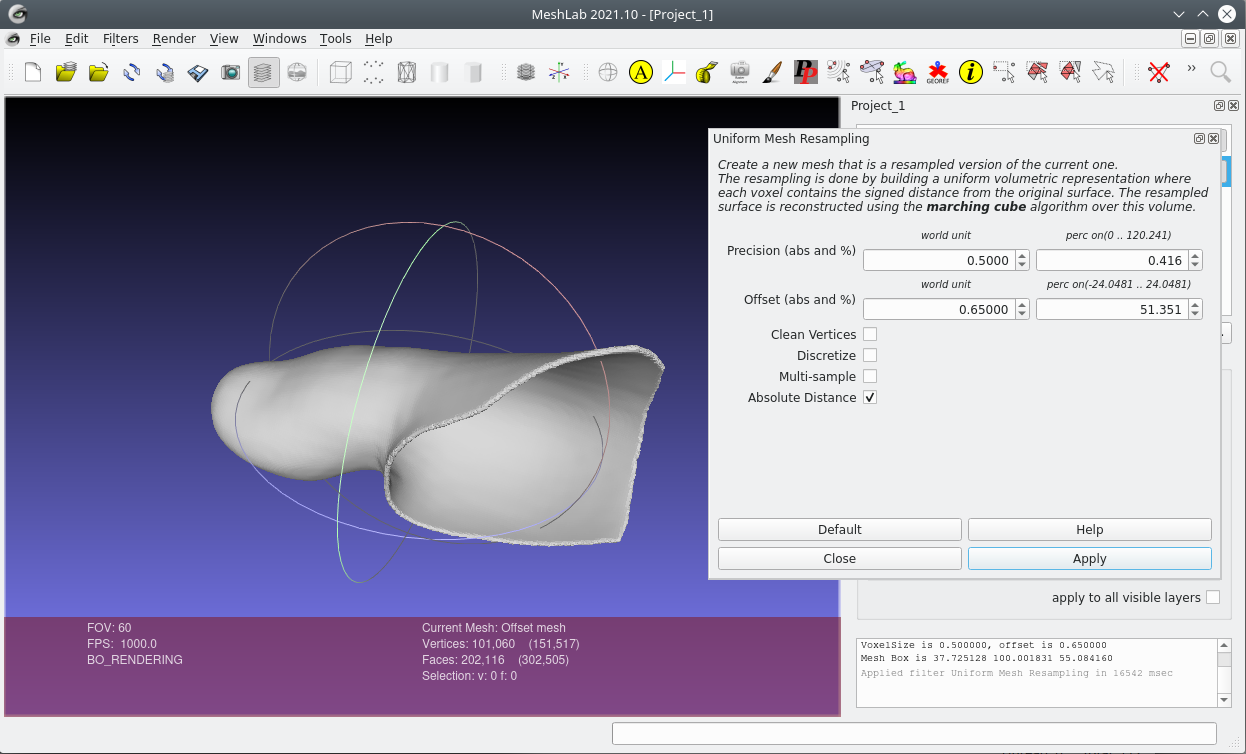
Open the last saved STL with Cura or your favorite slicer for printing.
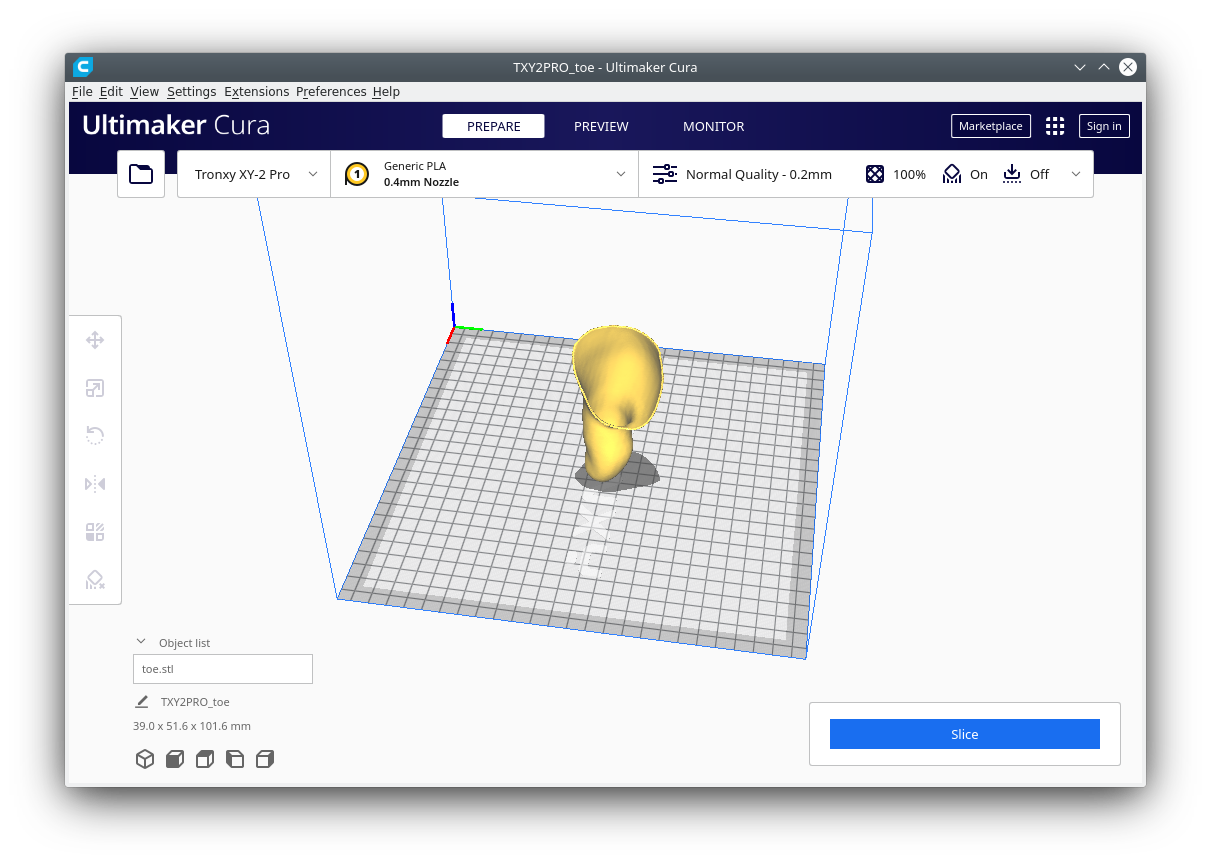
End down, with supports and 100% infill PLA worked good for me.
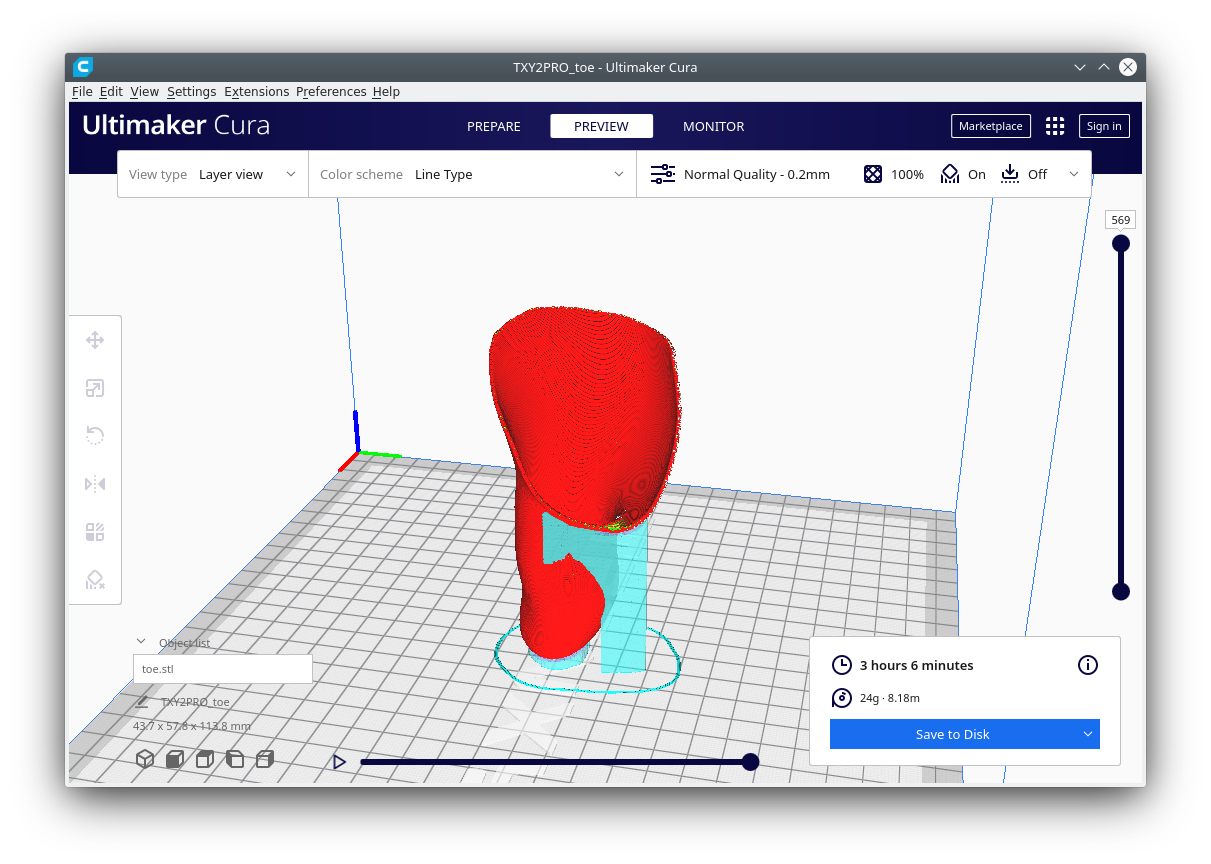
I had to set the "scale" to 112% for the best fit.
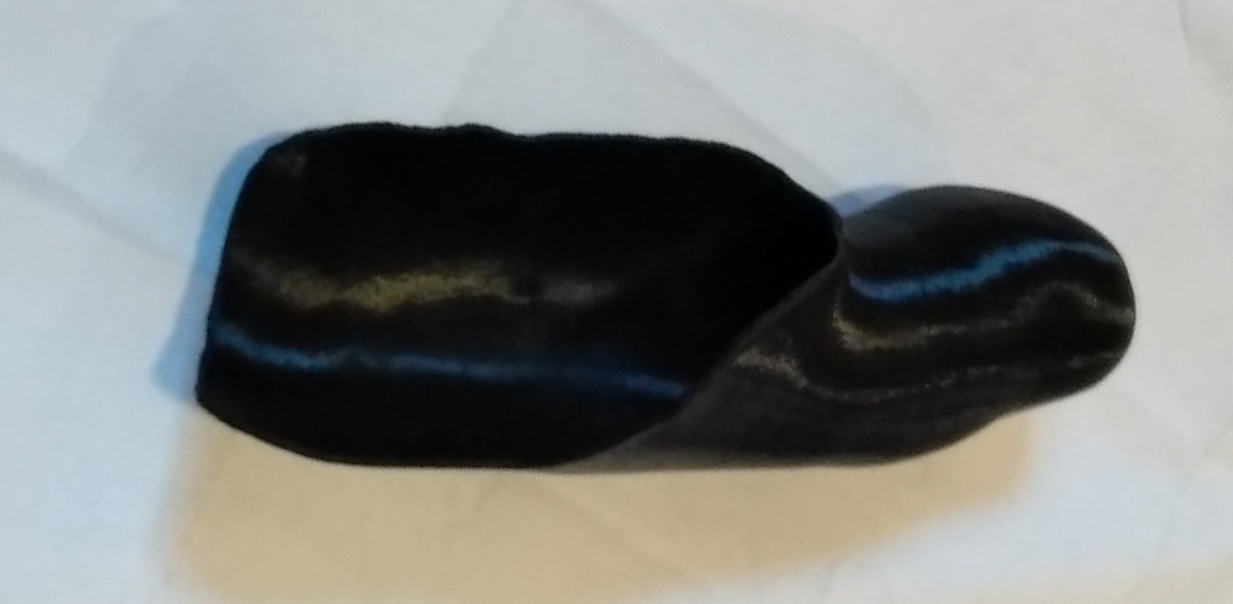
After printing one can easily use a hot air gun to heat and soften the model to make minor adjustments if needed.
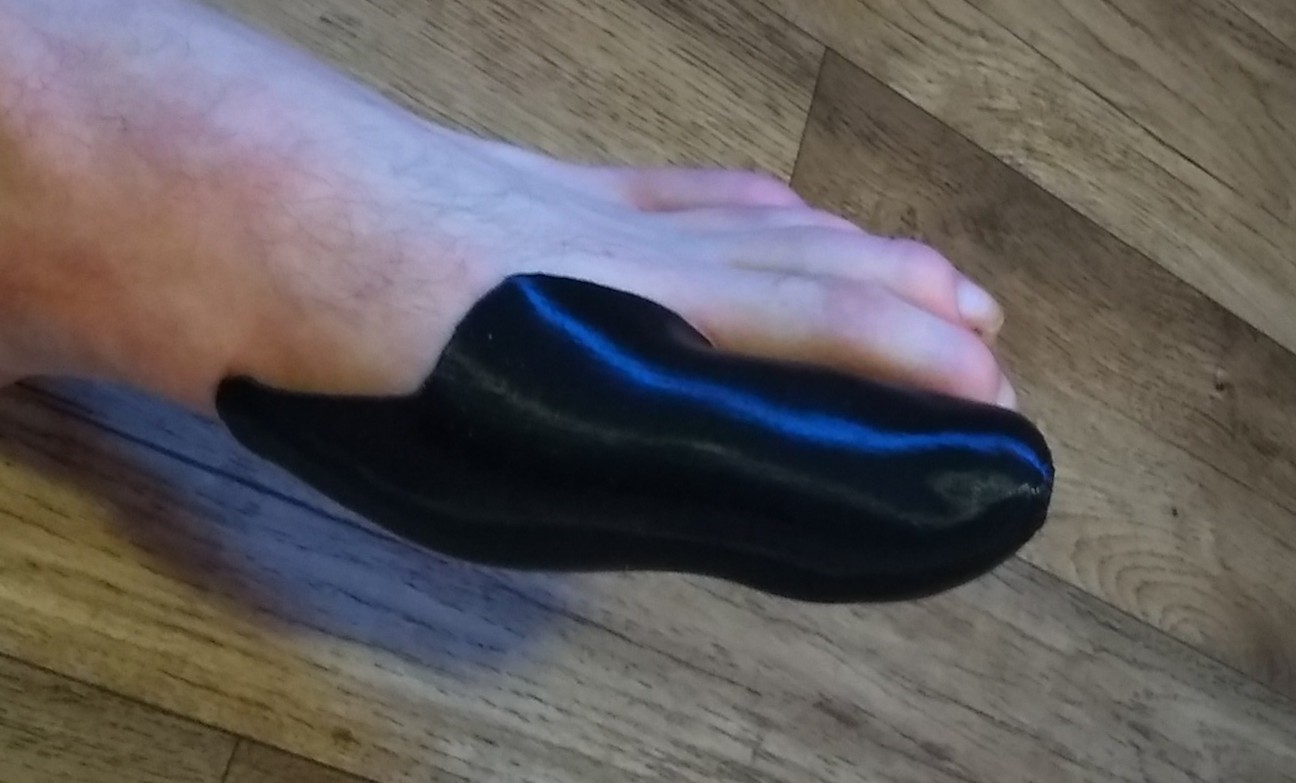
Adding vent holes would probably be a good idea for long term wearing.
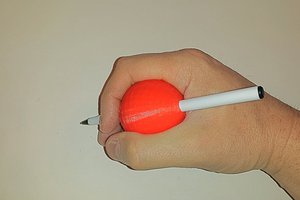
 Neil means
Neil means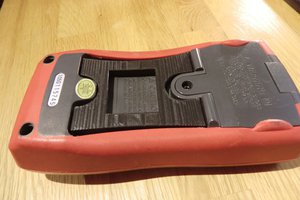
 Matthias Kesenheimer
Matthias Kesenheimer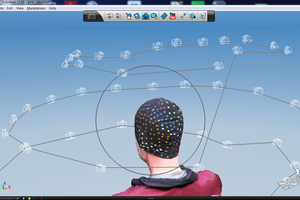
 Alan Campbell
Alan Campbell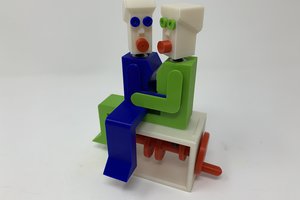
 Greg Zumwalt
Greg Zumwalt